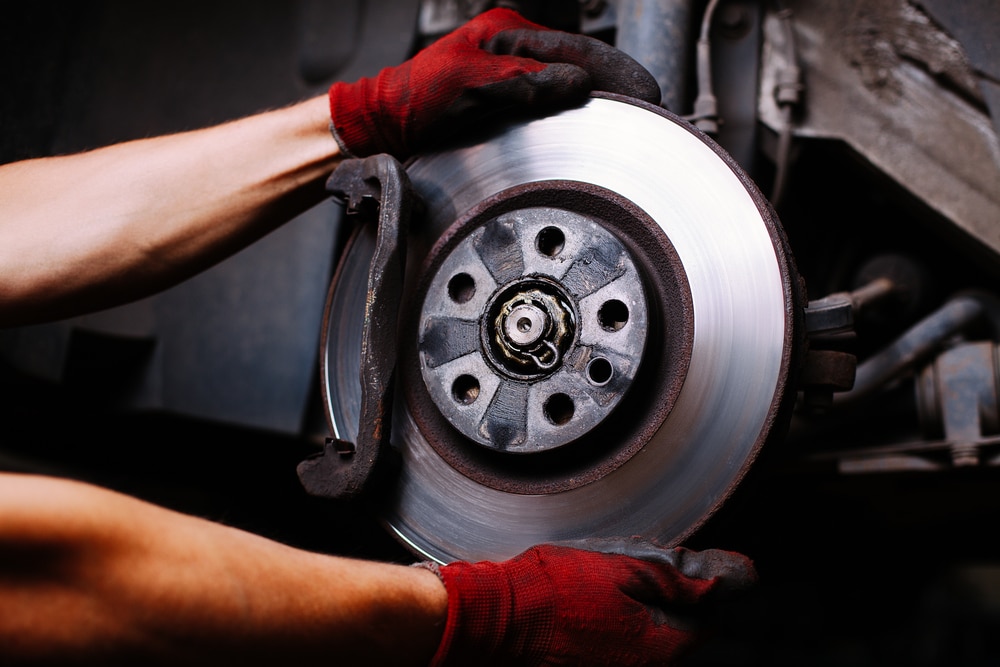
There is nothing worse than that high-pitched squeal when you go to stop. This sound comes from the need to replace your brakes. Brake pads are subject to wear and tear over time. Constant friction between the brake pads and the brake rotor contributes to the gradual degeneration of the brake pads. Ideally, you should replace brake pads after every 10,000 to 30,000 miles.
At Putnam Ford, we understand that you probably lack the tools and expertise to replace brake pads yourself. Our offices are within easy reach if you live in the San Mateo area, so we can surely help you determine when your brakes need to be replaced. Visit us today for a consultation and brake pad replacement!
What Are Brake Pads and How Do They Work
Before understanding how often to change brake pads, you should know what brake pads are and how they work. Brake pads are plates found inside the calipers of a car's braking system. The plates are made of either organic, semi-metallic, or ceramic materials.
Brake pads work by pressing against the brake rotor during braking. The resulting pressure on the brake calipers helps slow the vehicle when you step on the brake pedal. This action often generates friction, contributing to the brake pads' gradual degeneration.
Signs You Need New Brake Pads
The answer to how often brakes need to be replaced is pretty straightforward. However, knowing when your car desperately needs novel brake pads is a matter of observation. Here are signs you should look out for;
You Hear a Squealing Noise When Braking
If you are a car owner, it is not unusual to ask yourself how often to change brake pads. Sometimes you might hear a squealing noise when braking, particularly when your vehicle has gone over 10,000 miles before a brake change. An indistinct buzzing, scraping, or squealing sound often signifies worn-out brake pads.
You Hear a Clicking Noise When Braking
If you are unsure how often to change brake pads, you should know that a clicking noise when braking indicates worn-out pads. The pins, clips, and bolts that hold brake pads within the calipers loosen over time. The loose accessories can make clicking noises when they wobble around. Don't hesitate to bring your car to our San Mateo facility when you hear such a noise.
Bringing the Car to A Stop Takes More Time Than it Used to
If you do not know how often to change brake pads, you should watch out for brake fade. Brake fade occurs when the brake pads in your vehicle cannot produce sufficient friction to stop the car in the shortest possible time. This can be particularly problematic if you live in a hilly area.
The Front of Your Car Pulls To One Side When You Brake
On most occasions, your car's brake pads do not disintegrate at the same rate. The brake pads on the left side of your vehicle may wear out faster than those on the right side. You might notice your car's front section pulling towards one direction during braking when this happens.
The Brake Pedal Vibrate When Pressed
If your brake pedals vibrate when pressed, it is probably time to replace your brake pads. Binding resin quintessentially holds brake pads together. When the brake pads degenerate over time, the resin melts and spreads in the rotor. The resultant layer often causes the brake pedals in your car to vibrate when you step on them.
Certified Ford Brake Service in San Mateo
Brake pads need to be replaced after your car clocks 10,000 to 30,000 miles. If you are looking for a place to replace your car's brake pads in the San Mateo area, Putnam Ford is your best bet. Our professional team has the tools, equipment, and expertise to solve your car's brake problems. Contact us today for all your brake pad replacement needs!
Image Source: baranq / Shutterstock